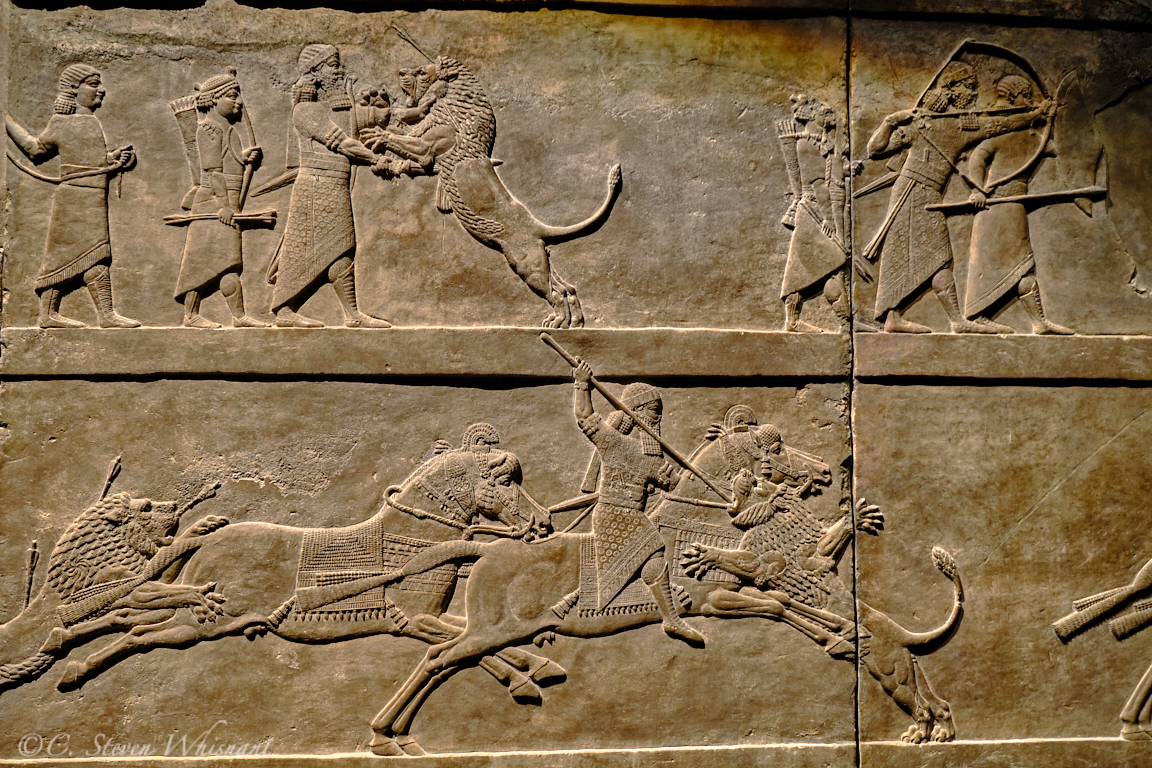Our next outing was to the British Museum to see the special exhibit about Ashurbanipal, King of Assyria. This is an amazing collection of art, writings, and everyday items from a long ago world that now resides in a place being torn apart and destroyed by war. I feel privileged to be able to see this material. As always, the British Museum has once again managed to bring the world to London to save me the pain of traveling to see it.
The story of Ashurbanipal is complicated and I cannot begin to reproduce it here. I will simply provide a few links and try to give a feel of what is in the collection (not all of it, by any means). To me, among the most impressive items are the carved stone reliefs showing scenes from the King's life. Although the faces do not seem to be those of individuals, the details found in these images are stunning. In the image above where the king is transformed into a mythical man/lion creature, we see amazing musculature on both parts of the animal. The arms in the men below look like they could be real arms from a living person.
To give an idea of how this might have looked to the contemporaries of the King, the museum has the brilliant idea to project images onto the stone artifact.
When the lights are on, you see a colorful display that might have brightened the halls of the palace where these items were found. Color changes everything. Just as we now only think of the early 20th century in black and white since there are so few color photographs from that time, we only think of the ancient world as a stone-colored world, filled with dull images of stereotypical people on flat (ish) walls. but when the color is superimposed, the images come to life. The musculature has meaning for the life-like men serving their ruler.
The bottom sections are just as spectacular with the great detail they show. And with the inspiration of color from the top panel, we can now imagine the colorful details that were present in the lower sections.
We know from carvings such as the one below that these people enjoyed music from stringed instruments.
I given here but a poor sample of what there is to see in this display (ends February 24, so hurry!). By far my favorite are the stone carvings. I am especially fascinated by the ones like the one below where there is an image and text describing what it shows. Almost like a diagram from a history book. For I am sure that this is what the King knew he was creating...history.










No comments:
Post a Comment
We enjoy hearing from our readers.